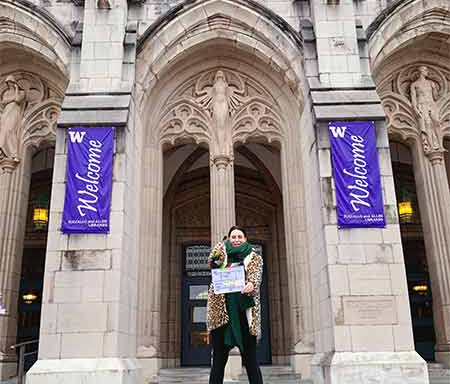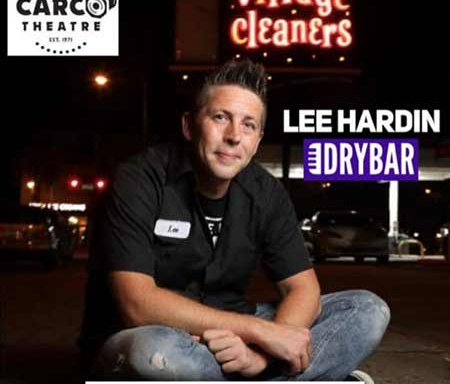
New Hollywood, often referred to as the “American New Wave,” is used to describe a movement in American film history from the 1960-1980s. It was known for the rise of a new generation of young, film-school-educated, countercultural filmmakers, directors, actors and writers. This creative group spoke to audiences in ways that Golden Age era directors were struggling to achieve. The result was a decade or so of bold experimentation turning out some of the most creative and memorable classics in mainstream American cinema. Some of the most notable directors from this time include Steven Spielberg, George Lucas, and Woody Allen. A new brand of cinematic artistry was taking place during this era, and this group of talented and bold directors led the way.
The 1950s and early 1960s saw a Hollywood dominated by musicals and historical epics like Gone with the Wind. Hollywood experienced a shift into New Hollywood as early as 1957. But before the era was in full swing, audience share continued to decline and had reached disturbingly low levels by the mid-1960s. Studios were struggling to captivate audiences successfully, and costly production flops were revealing this. Movies like Tora Tora Tora and Hello Dolly failed to replicate the success of The Sound of Music. The studios were feeling the strain of the lack of return and unpopularity of these productions. So, what was going on that lead to the shift in entertainment taste and participation? Well, part of this loss of revenue was due to the demographic change that was emerging in the 1960’s. Baby boomers were coming of age. A shift was occurring where a majority of viewers were going from a middle-aged high school educated audience to a younger, more affluent and college educated audience. The younger audience was drawn to European films, and Japanese films, a different flavor or entertainment than the older audience was used to experiencing.
If an industry is struggling, it normally means it’s time to get innovative, and Hollywood needed a change to stay afloat. The desperation felt by studios during this period of economic downturn led to innovation and risk-taking, allowing some of the classic movies we know and love today to take shape. In an attempt to capture that audience which found a connection to the “art films” of Europe, the studios hired a mix bagged of young filmmakers and allowed them to make their films with relatively little studio control. This was the first time the fil-makers had this amount of autonomy. This, together with the breakdown of the Production Code in 1966 and the new rating system in 1968, set the scene for New Hollywood. Films went against the standard “Hollywood ending” theme. Happy endings and riding off into the sunset were a thinking of the past. By the mid 50’s films had a new major competitor, the television. With the rise of TV, studios needed some novelty to help fill those seats in theaters and show why movies were still better than TV. As TV started getting better and better, fewer people were going to the movies. It was cheaper and more convenient to stay at home. Something new and innovative was going to have to draw consumers back out to the cinema. And this is where the new era took Hollywood by storm. New Era movies were bloody, violent, sexual, and they pushed the limit on language and taboos. They were the counter-culture answer to decades-long conservative Hollywood.
Bonnie and Clyde and Easy Rider, released in 1967 and 1969 are often cited as the first New Hollywood films. They were made by big studios and featured several of their hot young stars, and yet they had violence, sexuality, and a dark tone that owed more to European cinema than anything the Golden era would have produced. This was a new flavor of cinema that sent a positive shock through the industry. Bonnie and Clyde was a massive hit. The film swept up young audiences, proving there was indeed a market for movies about young people, for young people. The film grossed over 50 million dollars against its 2.5 million budget. Easy Rider was as successful as Bonnie and Clyde. Grossing 60 million dollars against its $400,000 budget, they did well on their return. Some of the most well-known movies produced included, The Graduate, Bonnie and Clyde, The Graduate, Easy Rider, The Godfather, One Flew Over the Cuckoo’s Nest, and Annie Hall, just to name a few.
The Graduate is another classic from the new age era. This risqué film starred Benjamin Braddock (Dustin Hoffman) as a young man with no idea where his life would take him. A recent college graduate, he had no ambition and no certainty. His parents push for him to attend graduate school and advance into a suitable career. He soon comes under the seduction of older woman Mrs. Robinson but is also pressured to pursue her daughter Elaine who was more age appropriate. You know what they say, idle hands are the devil’s playground. Directed by Mike Nichols and aided by an iconic soundtrack by folk duo Simon and Garfunkel, highlighting their hit song “The Sound of Silence,” The Graduate represented a trying time for young people. With post-graduate life, there was pressure to get a job, start, a family, get more education, and figure out your path in life. Those who were struggling with next steps or were feeling overwhelmed could quickly identify with Benjamin.
Woody Allen is one of the most successful Hollywood legends of all time. His success began during the new era, and it has been said that his hit movie Annie Hall pretty much defines much of success and career projection. What made “Annie Hall” stand out was its impact on the romantic-comedy genre, although, it wasn’t the typical rom-com people were used to. While some critics called the movie awkward, it truly depicted many of idiosyncrasies of relationships and the different stages that a couple goes through. Neurotic comedian Alvy Singer (Woody Allen) and Annie Hall (Diane Keaton) connect at first, but their relationship dissolves over time. They are attracted to each other but later learn they are not meant to be. Annie and Alvy are opposites, and that’s what makes this film go against the typical Hollywood love story. Plus, there isn’t really a happy ending, but one that many people who had been through or were going through difficult relationships could relate to. Since his directing debut in 1966, Allen has written and directed over 40 films. He has been one of the most creative American filmmakers of the last 50 years directing on many topics, mostly involving love, philosophy, death and comedy. At the 40th Academy Awards, both “Bonnie and Clyde” and “The Graduate” were up for several awards, competing against each other for Best Picture of the Year. Both lost to “In the Heat of the Night.” Both films had multiple actor nominations with Estelle Parsons winning Best Supporting Actress for “Bonnie and Clyde.” Mike Nichols won Best Director for “The Graduate.”
According to Wikipedia, Woody Allen’s children include: Children: Ronan Farrow, Dylan O’Sullivan Farrow, Moses Farrow, Bechet Allen, Manzie Tio Allen
The American horror genre was pushed to new limits during the New Age. Films like Rosemary’s Baby, The Omen, The Exorcist, and Carrie all worked hard to restore the original nature of the genre. Meanwhile, on the other side, blood-drenched flicks like Night of the Living Dead and The Texas Chain Saw Massacre shocked viewers with their brutality. These later films showed that the new age was stretching boundaries and what kind of cruelty and violence would be allowed in the cinema. We see much of this brutality in horror movies today, keeping viewers tense and on the edge of their seats.
A major shift in the New Hollywood filmmakers brought to the art form was a that much of the films were focusing on real life and some relatable. During the Golden age where studios and large sets were the mainstream, stars were remote, lofty figures and unrelatable, yet entertaining for the time. The Motion Picture Production code put restrictions on racy or inappropriate content, and while film makers in the golden age found ways around these rules, explicit content was strictly frowned upon and did not make its way to the screen until the new age directors had fewer rules, more freedom, and more ability to take risks.
Realism in films was made possible when film rating systems were changed in the Motion Picture Association of America, and movies were shot outside of grand studios and sets. Being able to shoot on location was made possible with advancements in film technology. With technology like the Panavision Panaflex Camera, filmmakers could shoot 35mm camera film in various places without being held back. Location shooting was cheaper and faster than the Golden Age of film, and directors had to learn fast what realistic shooting locations would resonate most with audiences. There was a stark contrast between the realism in the New Age compared to the studio shooting from the Golden era. Films took on a new feeling of relatability and connection.
When we look back at history, it is clear the 1960’s was a cultural revolution in many parts of society. Music, literature, politics, sex, and race made their marks in various ways during this era. There were riots, protest, and people were looking at America in a critical way, and things were being questioned and evaluated in a way that had not been experienced since the end of the Second World War. And these conversations took a short amount of time to transition to the movies. There are a lot of things which led to the arrival of New Hollywood in the 70’s. In a time of cultural change, many people use the movies or entertainment to funnel their experiences or see a representation of what is happening around them. Many of the films left a true mark on the decades on the new age of Hollywood and the years to follow.
Many of the directors and young actors from the New Age are now considered Hollywood legends. Young American filmmakers such as Francis Ford Coppola, Martin Scorsese, Peter Bogdanovich, Robert Altman, Woody Allen, Steven Spielberg and George Lucas were a part of the transition Hollywood experienced. We still watch many of their movies today, and they are referred to or referenced in new movies often is subtle ways. If you get excited at the statement “In a Galaxy Far Far Away…,” you can thank the New Age of Hollywood and the explosion of creative risk-taking that took place. Star Wars was a movie that broke the box office when it was released and continued to be a box office record-setter for years to follow. The film grossed over $700 million worldwide and produced countless lines of action figures, comics, t-shirts, books and cereal. Star Wars would forever change the connection between merchandising and films. The New Age of Hollywood and the explosion of creative risk-taking that occurred changed the face of Hollywood forever.
The Story Behind Dylan O’Sullivan Farrow and Moses Farrow Feud
Dylan O’Sullivan Farrow and her adoptive brother have had a war of words in the media. Both sides have been making claims about each other and it has gotten heated. Once these two used to call each other brother and sister but that time has long passed and now it appears that the two will never be close ever again. It is sad that these two, who were both adopted by the same woman, have gone so far down this path that they can’t come back. This celebrity family feud has rocked the headlines of major newspapers everywhere. There is a long history between the two siblings and there is only one reason why these two have come to such a divide is because of their mother.
When it comes to family drama between parents, it’s always the kids that suffer. Kids often times get torn between two parents who are fighting. They are forced to pick sides between the parents and in turn they lose a relationship. It is very hard to come back from being forced to pick a side. The negative emotions and feelings continue on and the grudge never goes away. The war of words between Moses and Dylan O’Sullivan Farrow all started because their mother forced them to pick a side between her and her ex-partner. Their adoptive mother, Mia Farrow, pitted the children against each other in a way that caused such devastation that now the two will most likely will never have a relationship again.
The origin of their animosity is rooted in one of the most outrageous celebrity separations of the last century. When Mia Farrow discovered that her long time partner, Woody Allen was having an affair with her older adoptive daughter, Soon-Yi Previn. When the affair was exposed, Mia Farrow wanted nothing more than to punish Woody Allen for his betrayal of their relationship. According to witnesses, Farrow called Allen “satanic and evil” and made threats against his life. These witnesses and Allen himself testified during the infamous 1992 custody trial that Mia Farrow’s escalating rage was put on full display in front of the children.
Woody Allen and Mia Farrow met in 1979 at a popular Manhattan restaurant called Elaine’s. After a long courtship, the two slowly moved into a full-fledged relationship. They never got married but they worked on numerous films together and would later have children together. During the course of their relationship, Farrow adopted a baby girl from Texas in 1985. The baby girl named, Dylan O’Sullivan Farrow, soon had a brother in 1987. Mia Farrow gave birth to her and Woody Allen’s son, Satchel Farrow. Satchel later changed his name to Ronan. Woody Allen would later end up adopting Dylan Farrow along with her adoptive brother Moses. Moses was first adopted in 1980 by Mia Farrow and he ultimately grew close to Woody Allen.
The family seemed perfect from the outside but it soon came crashing down when the news of Allen’s affair had broken into the media. The affair between Woody Allen and Soon-Yi continued and Farrow became enraged. Soon after the affair, Mia Farrow made some shocking allegations against Allen and he was investigated. She alleged that Allen had abused Dylan and she had called a family psychologist, Dr. Coates to tell her about the abuse. After the allegations in August of 1992, Allen sued Farrow in New York State court for the custody of Ronan, Moses and Dylan O’Sullivan Farrow.
A few days after the filing for custody, Allen was informed that the Connecticut State Police would be investigating Mia Farrow’s claims of abuse. Allen makes a public appearance to say that the allegations of child abuse are not true and outrageous. The case was later dismissed after a seven-month investigation and he was cleared of the charges. They found no evidence. The custody trial began in March of 1993 and during the trial there was testimony by professionals that Mia Farrow had coached her daughter to accuse Allen of abuse.
Ultimately, Woody Allen lost the custody case and he believes that the accusations painted him in a bad light. Even though there was no evidence, it was always in the back of people’s minds. He was denied visitation rights to Dylan Farrow and filed an appeal. He lost the appeal and although it pained him, he moved on. He got married to Soon-Yi and remains married to this day. Allen has also continued to deny the allegations.
The children grew up, but they picked up where Mia Farrow left off. The news cycle surrounding the story had died but with the introduction of social media both Ronan and Dylan Farrow took up their cause on their social media platforms. Dylan O’Sullivan Farrow also gave an interview for the first time in 2013 about her side of the story. She reiterated her abuse. She goes on to pen an open letter once again rehashing the details of her alleged abuse. Ronan Farrow supported his sister’s claims and told the media that he believed her story of abuse.
Moses Farrow had remained quiet about the accusations against his adoptive father, until the open letter that Dylan Farrow had posted. He knew that he could no longer sit by and not give his side, and his side was radically different. In 2014, Moses Farrow gave his own interview to People Magazine and his side painted Mia Farrow as a manipulative force in the children’s lives who actively and purposefully poisoned her children against her ex. Moses Farrow told people, “My mother drummed it into me to hate my father for tearing apart the family and sexually molesting my sister and I hated him for her for years. I see now that this was a vengeful way to pay him back for falling in love with Soon-Yi.”
He also accused Mia Farrow being a bully who hit the children. Moses also described her as an extremely angry person who would lash out if the children did not obey her with complete and absolute obedience. He said, “From an early age, my mother demanded obedience and I was often hit as a child. She went into unbridled rages if we angered her, which was intimidating at the very least and often horrifying, leaving us not knowing what she would do.”
These two siblings at odds with each other both made claims against each parent and their stories could not be more different. Both Dylan and Moses are firmly on planted on opposing sides and most likely will never be able to repair their relationship. The fight between their parents has divided them in the worst way possible. When two parents fight, the kids are the ones that lose every time.
Relevant Sources:
https://en.wikipedia.org/wiki/New_Hollywood
https://www.emeraldcityjournal.com/2016/03/woody-allen-and-the-depiction-of-strong-women-in-film/
https://twitter.com/FactsWoody





